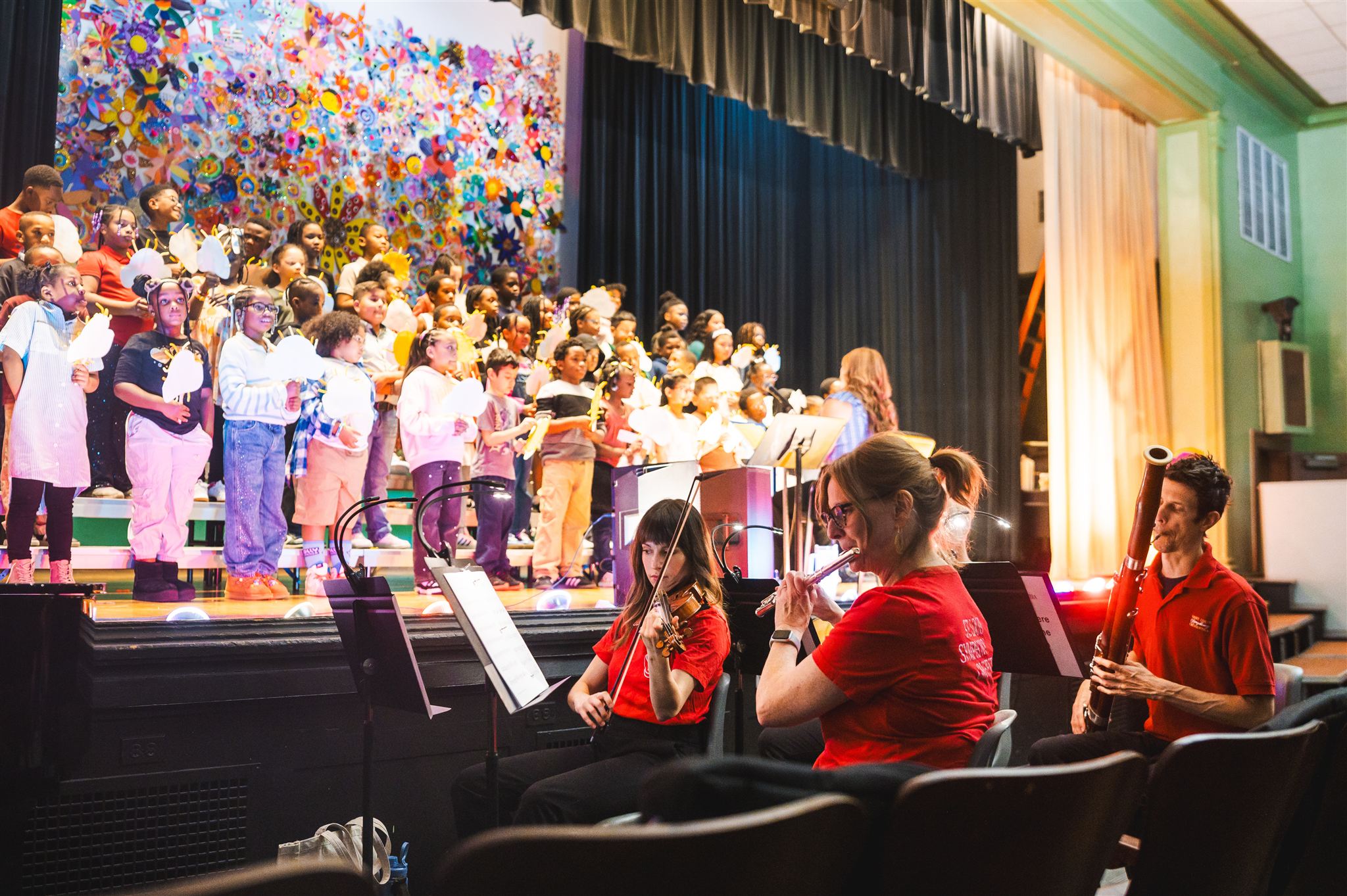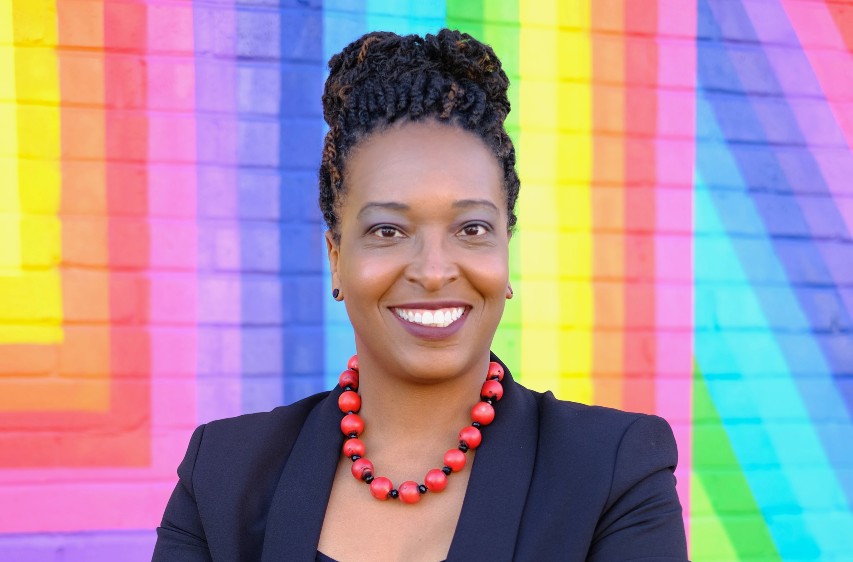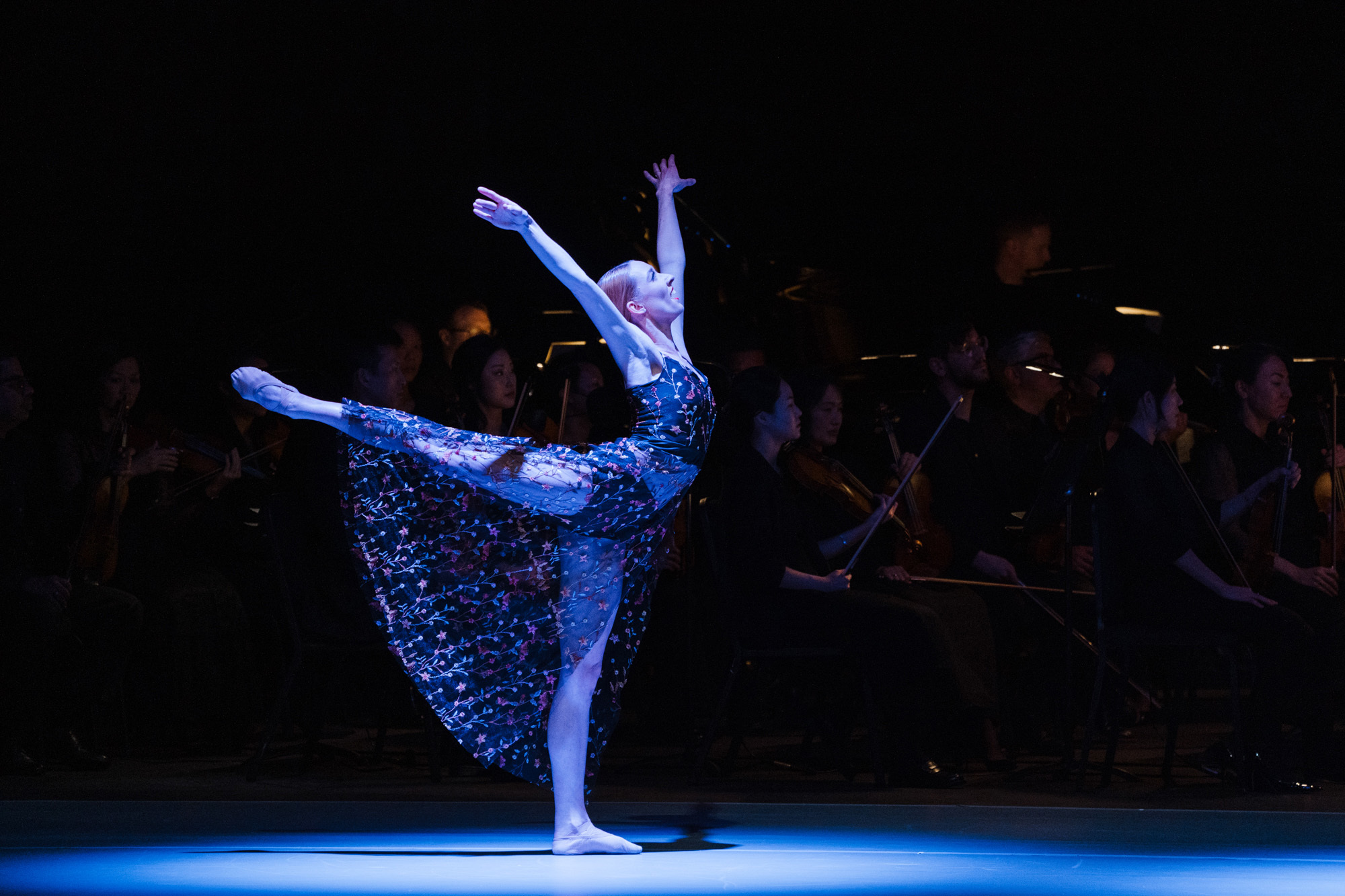Inside A Night of the SLSO’s Peer to Peer Program
By Eric Dundon
In a nondescript classroom on the campus of the University of Missouri–St. Louis, three musicians unpack their double basses, apply rosin to their bows, and get to work. The trio—Aleck Belcher, Gabe Gibert, and Sabrina Bush—gathers on January 28 for a session of the St. Louis Symphony Orchestra’s Peer to Peer program. Peer to Peer pairs musicians from the St. Louis Symphony Youth Orchestra (YO) with rising young string players from Gateway Music Outreach (GMO)—a nonprofit that provides access to affordable quality instrumental music programming to underserved youth in the St. Louis area. Each week, the student pairs meet, and SLSO musicians serve as their coaches and mentors throughout the school year.
Peer to Peer deepens students’ musical growth through personalized instruction and meaningful relationship building, creating a pathway to the SLSO for young Black and Latiné musicians. The SLSO has built on GMO’s strong foundation of ensemble-based learning and community support since partnering on Peer to Peer in 2018.
The musicians are in very different stages of their musical journeys: Belcher is the Associate Principal Double Bass of the St. Louis Symphony Orchestra (SLSO), a position he won in 2019; Gibert is a multi-year participant in the St. Louis Symphony Youth Orchestra; and Bush, a GMO musician and Hazelwood West High School student, has played her instrument for two years.
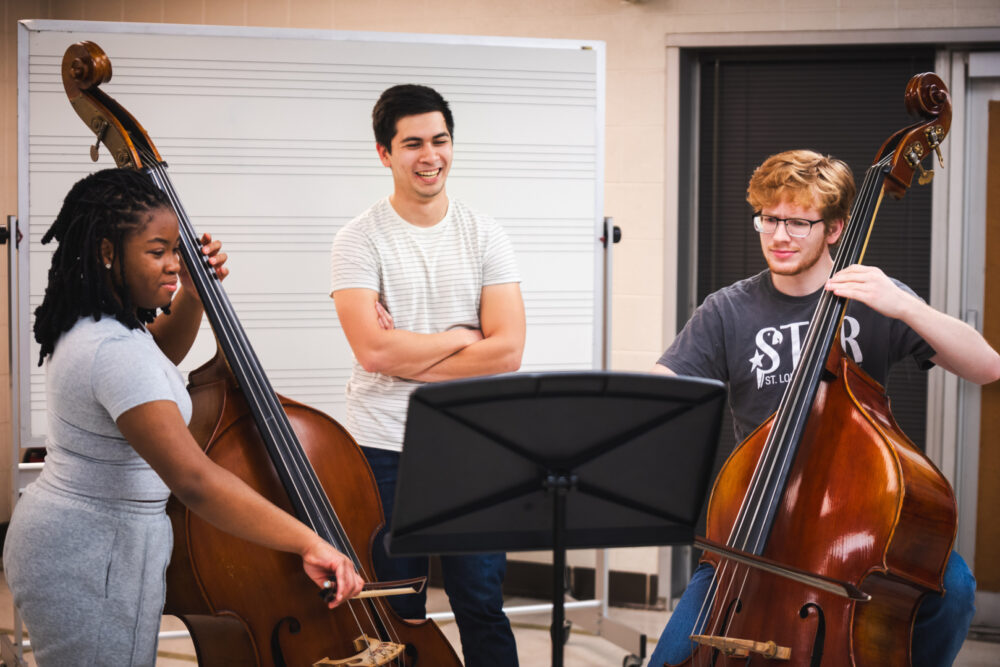
Here’s a look at a typical Peer to Peer session with Belcher, Gibert, and Bush.
6:52pm
Joseph Hendricks, the SLSO’s Peer to Peer Manager, welcomes musicians as they arrive on UMSL’s campus for Peer to Peer sessions.
“Participating students have a range of experience, so each one needs something different from the program,” he said.
Gibert arrives first and Hendricks directs him to the correct room. The 2024/25 season is his fourth season in the YO and his second year as a YO counterpart in Peer to Peer. Also a mentor and educator with the non-profit Pianos for People, he views mentorship as a key component of musicianship.
6:57pm
Belcher and Bush arrive, and the trio immediately catch up on what’s been going on since their last session. Belcher asks Bush about an upcoming audition for the Sphinx Organization’s Performance Academy—a full-scholarship intensive summer music program that promotes cultural diversity for young string musicians.
Although Bush expresses reticence about being ready for an audition, Belcher offers encouragement.
“I say you send the tape and see what happens,” he says. Peer to Peer focuses on goal setting and incremental growth—two key facets of a young musician’s journey.
Before diving into exercises, Belcher suggests the trio record an excerpt from the audition material at their next meeting to review and identify areas for improvement. Still a little nervous about it, Bush ultimately agrees.
“When a student comes to us with something they want to pursue, that personal investment boosts their motivation and growth,” Hendricks said.
7:02pm
“How is the Eccles going?” Belcher asks Bush. “Are you sick of it yet?”
“A little bit,” Bush responds with a laugh as she takes out sheet music of the Henry Eccles Sonata in G minor for double bass, the piece Bush has been studying.
As Belcher watches from his seat, Bush sets up with Gibert mirroring her, his left hand hovering over the fingerboard of his bass.
“I think you should play the whole thing, since that’s what you’d have to play for the audition,” Belcher suggests.
SLSO musicians guide the group at their joint meetings, while YO students act as peer mentors, encouraging GMO students and providing tips and tricks to move past roadblocks. Sessions are low-pressure environments. SLSO musicians gauge the students’ progress and identify moments to strive for growth.
After a moment of deep concentration, Bush begins.
7:07pm
During a particularly challenging section in the Eccles Sonata, Belcher suggests, “Chill out, take it at half speed.”
Noting improvement from the previous week, Gibert takes a moment to praise Bush.
“I’m so proud,” he says in a good-humored tongue-in-cheek manner.
Belcher centers the conversation on growth. He asks about practice strategies Bush used that led to improvement. The discussion leads to a moment of recognition for Bush, reflecting on strategies for progressing.
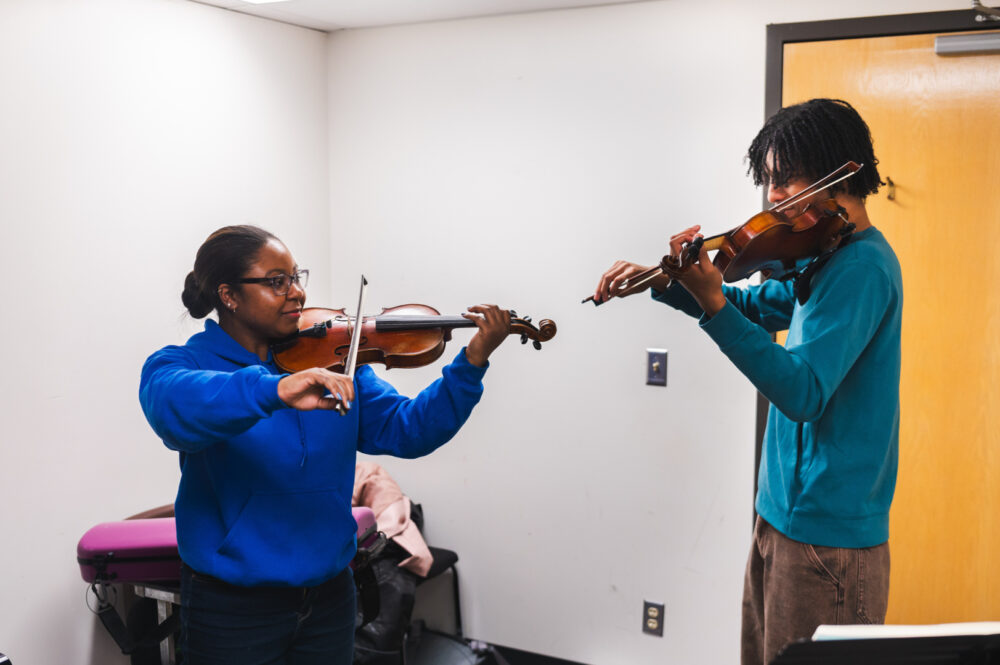
7:11pm
A particular rhythm trips up Bush. Belcher goes over to Bush’s music stand, animatedly counting beats in a measure to demonstrate where the rhythm falls.
A few moments later, the conversation shifts, with Belcher and Gibert talking about music as a conversation. Belcher demonstrates different “voices” in the Sonata in a single phrase, encouraging deeper musicality in Bush’s performance.
7:19pm
Gibert notices a particular way Bush phrases a line in the music. He asks how else she could approach the passage. What else could she try?
Peer to Peer empowers the GMO students to learn from counterparts and professionals, and the YO musicians develop their own mentorship style and voice.
7:26pm
Gibert encourages Bush on a tricky passage that involves shifting—moving the hand smoothly up or down the fingerboard. He shows how he approaches the passage. For a moment, Belcher steps back and lets the YO musician take the lead. For Hendricks, who has overseen Peer to Peer for four seasons, this type of interaction is critical to the program.
“Peer to Peer fosters meaningful relationships between GMO and YO students, giving young musicians a chance to connect, support one another, and grow together,” he said.
7:37pm
The trio has been hard at work on the sonata. But a moment involving a technique elicits a laugh.
They work on trills, the rapid alternation between two notes. Trying different finger combinations, Belcher offers: “This one sounds a little bit like a goat.”
Then, he shows how he would execute the technique, and how he developed trills by integrating them into daily practice.
7:51pm
As the trio prepares to conclude the session, they talk about next steps. What will Bush work on for next time? What are the strategies that she’ll use to improve the piece?
A defining strength of Peer to Peer is its individualized approach—tailoring each experience to the student’s skill level, interests, and goals. As Peer to Peer continues to evolve, it builds meaningful bridges between young musicians and professionals, nurturing confidence, deepening musical understanding, and opening doors to future possibilities.
“Peer to Peer shows students what’s possible through music,” Hendricks said. “Whether they dream of performing professionally, working behind the scenes, becoming a lifelong supporter of music in their communities, or using skills learned through music in their everyday lives, we hope music remains a meaningful part of every student’s journey.”
Editor’s Note: Sabrina Bush did submit an audition to the Sphinx Organization’s Performance Academy and was accepted to the summer 2025 program.
Eric Dundon is the SLSO’s Public Relations Director.
